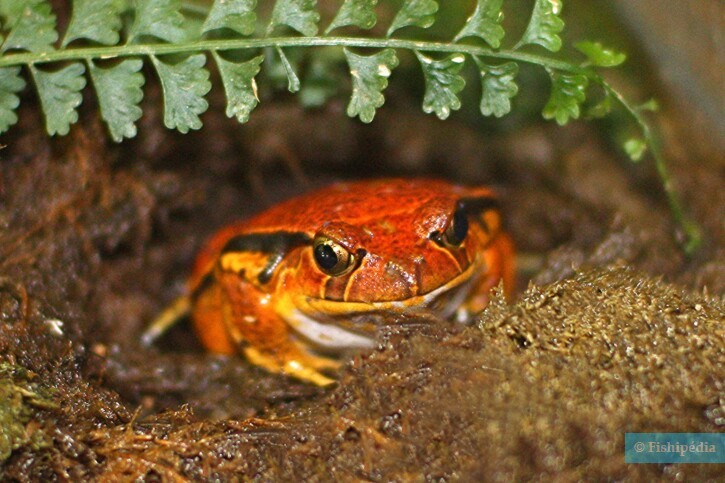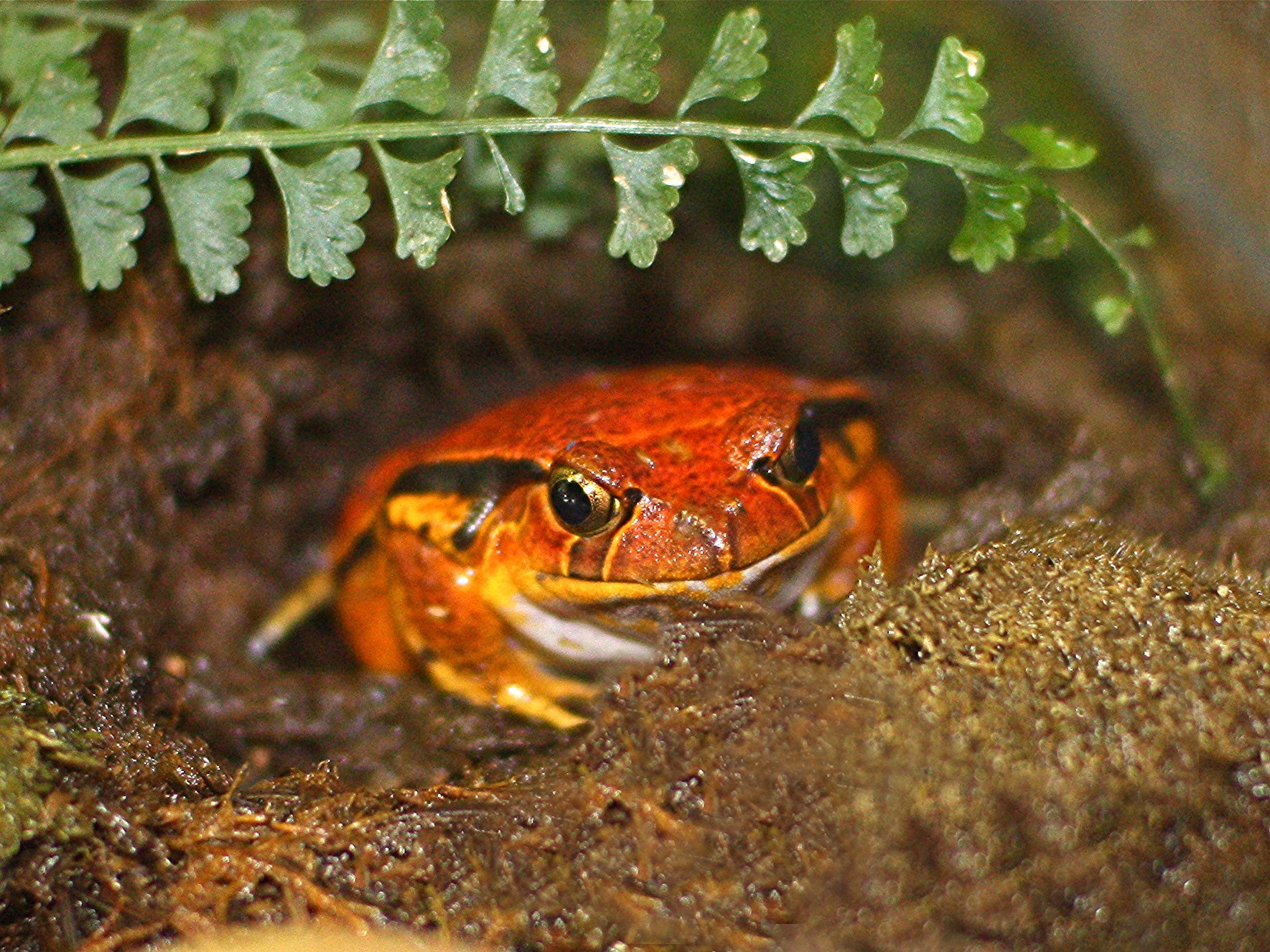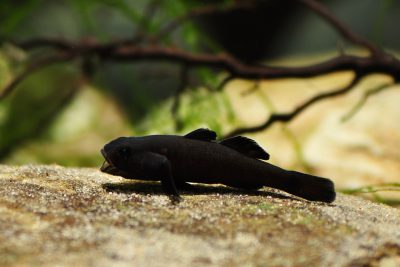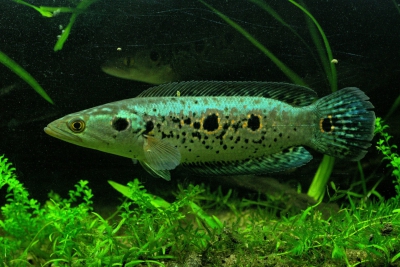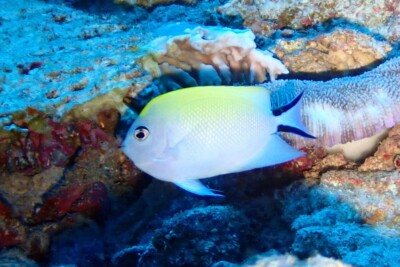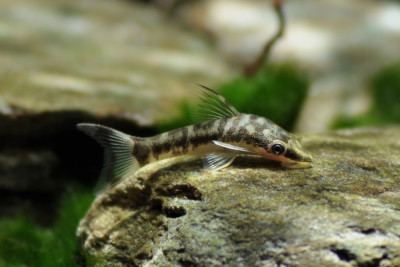Introduction
Dyscophus guineti is a terrestrial frog native to the humid tropical forests of eastern Madagascar. It is distinguished by its large size and bright coloration. Found in flat and swampy areas of primary forests, it is associated with temporary ponds and stagnant streams for breeding. Although relatively abundant in some sites, its presence in other locations is still under-documented.
Who is it?
Morphology
-
Size6 - 9.5 cm
-
Mimicryplants
-
Size6 - 9.5 cm
-
Mimicryplants
How to recognize this amphibian ?
This fairly large frog has a dark diamond-shaped mark visible on its back. The belly is uniformly white. The skin is smooth and has two well-defined dorso-lateral folds.
Sexual dimorphism
Dyscophus guineti is a large frog, exhibiting a notable difference in size and coloration between males and females. Males measure between 60 and 65 mm in length, while females are larger, reaching between 90 and 95 mm. Males have a yellowish back, while females sport a reddish-orange hue, often accompanied by dark reticulations.
Behaviour & Life cycle
-
Sociabilitysolitary
-
Way of livingdiurnal
-
VenomousNo
-
Dietpredator
Dyscophus guineti is a terrestrial and nocturnal species, often active on the forest floor at night. It mainly feeds on small arthropods and other invertebrates found on the forest floor in its habitat.
Reproduction
-
Reproductionovipare
During the breeding season, the female lays hundreds of sticky eggs in temporary or permanent ponds, especially in areas where water stagnates. Males produce calls similar to those of Dyscophus antongilii.
Harmless species
This species poses no risk to humans.
Origin and distribution
Geographic distribution & Conservation
Dyscophus guineti is endemic to Madagascar, where it is found along the belt of humid tropical forests in the east, at altitudes ranging from 150 to 900 m. It is found in several localities, such as Ambatovaky, Antsihanaka, Fierenana, and Soavala, although its exact distribution is likely more extensive than current data suggest.
Conservation status of populations (IUCN)
What is its habitat?
Natural environment characteristics
-
Temperature20 - 26 °C
Biotope presentation
This species is associated with primary forests, where it prefers flat areas with slow-moving streams and stagnant ponds. It is not found in severely degraded habitats. Its presence is notable in swamp forests and poorly drained clearings.
To go further
Sources & Contributions
Participation & Validation
The Fishipedia team and specialist contributors are committed to providing high-quality content. However, although the information comes from scientific sources or testimonials from specialists, the cards may contain inaccuracies.
Translation
Translation done with the valuable contribution of our translators, who make this information available to a wider audience. We sincerely thank them for their commitment.
Scientific partners
Same genus
